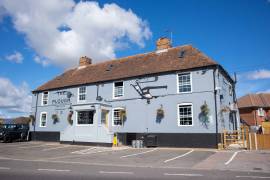Cellar to Glass: Keeping it extra cold
Extra cold beer has been an incredibly effective development over the past few years. It has given pub beer volumes a boost and with pub customers expecting cooler drinks it's becoming the norm to such an extent that some believe it could oust standard temperature dispense for lager altogether.
Yet extra cold comes at a price. Most pubs have been using under-counter 'pods' to get the temperature down, as Vic Nicholls at technical services supplier City Dispense Services (CDS) explains.
"Although the ice bank cooler in the cellar was originally designed to draw beer temperature down to around 7°C, the addition of pods made it possible to reduce the temperature to around 2°C," he says.
"The main disadvantage of pods, though, is their size and the fact, that as extra cold became more popular and more taps were added, an enormous load was placed on cooling capacity."
There have also been some complaints from barstaff of pods pumping out too much heat and some cases where careless installation has meant pods are actually heating up beer lines just before they reach the taps. So pubs are now turning to cellar-sited alternatives, chiefly systems using glycol, a chemical used in antifreeze that has a very low freezing point.
"Although not as cheap as pod systems, glycol systems are growing in popularity," says Nicholls. "Aside from providing a consistent pint they do away with under-bar cooling and only run when beer is being poured. And, with no ice bank to be replenished, recovery times are much quicker.
"We see glycol as being very much the future and are currently working on a complete system that will cool the cellar, the beer dispense system and the back-bar bottle coolers while simultaneously reducing energy consumption and emissions."
Glycol may not be the only alternative, though. Fearing licensees may be put off by the cost, and conscious of the amount of existing kit brewers have in the trade, CDS rival Innserve has developed a liquid called InnCool. It can be added to a traditional ice bank remote cooler in the cellar to reduce beer temperatures to extra cold levels.
InnCool is already being used in about 150 pubs and more are taking it up every week, says Innserve.
"We developed it for a number of reasons," says Innserve's commercial director Julie Charge. "For brand owners who want to use existing assets in trade, for retailers who want extra cold products but without secondary coolers and pods which take up valuable glass space, and for lower energy consumption.
"It reduces the equipment required to support extra cold brands and it's also a reasonably low-cost solution. "One five-litre container which will convert a standard remote cooler is only £42.40."















